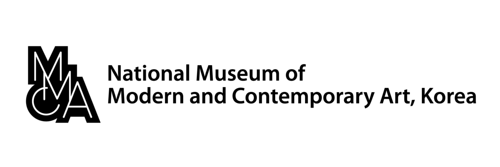November 25, 2021–February 27, 2022
313 Gwangmyeong-ro, Gwacheon-si
13829 Gyeonggi-do
Republic of Korea
Hours: Tuesday–Sunday 10am–6pm
T +82 2 2188 6000
Artists: Kim Juree, Na Hyun, Beak Jungki, Seo Dongjoo, Olafur Eliasson, Jean-Luc Mylayne, Jang Minseun, Jeong Kyudong, Chung Soyoung, Giuseppe Penone, Christian Boltanski, Hiroshi Sugimoto + Lim Dong Sik, Jeoung Jae Choul, Kim Bojoong, Lee Kyungho, with Korean Ecological Art Archives
Time of the Earth (2021) is an open platform that surveys the ecological worldview that has emerged as the zeitgeist of the current era, which is characterized by global crises such as climate change and pandemics. In addition to an archive, it presents works by 16 artists based in Korea and overseas who seek to restore the values of “symbiosis,” “connection,” and “balance.” New works by Korean artists Kim Juree, Na Hyun, Beak Jungki, Seo Dongjoo, Jang minseung, Jeong Kyudong, and Chung Soyoung meet works by international artists Olafur Eliasson, Jean-Luc Mylayne, Giuseppe Penone, Christian Boltanski, and Hiroshi Sugimoto to considerately and communally canvass the relationship between humans and nature, pursue balance and harmony, and establish an open consensus on coevolution.
Not only do the artists express their ecological worldviews through the works in this exhibition, but they have practiced them throughout the process of the works’ production and installation. Drywalls in the exhibition space have been taken down to allow for works to communicate with each other, and silver spheres, specially made in three different sizes, have been placed in between the art to reflect not only the works but also the visitors and the exhibition space. These choices express the artists’ intention to give the exhibition a sense of rhythm as well as convey the ecological messages of fluidity, variability, and connectivity. The archive of Korean ecological art (eco art) that continues in the Main Hall delineates how Korean eco art, which emerged in the 1970s as an alternative to existing art forms, has progressed. This section features works by eco artists Rim Dong Sik, Kim Bojoong, Jeoung Jae Choul, and Lee Kyungho as well as various archival materials to provide a concise introduction to Korean eco art.
Eco art overcomes the human-centric perspective that seeks ways of ecological thinking and practice. It is simultaneously an act of retrospection into the history of humankind and of opening up new possibilities for the future. Through new and representative works by the participating contemporary artists and an archive that narrates the birth and development of Korean eco art, Time of the Earth explores eco art’s historical value and potential. At the same time, it places the time of mankind within the grand history of the earth—the shared home of all living and non-living beings—to prompt viewers to reflect on their own ecological worldviews, which manifest only when humans recognize themselves as a member of the vast ecosystem.



